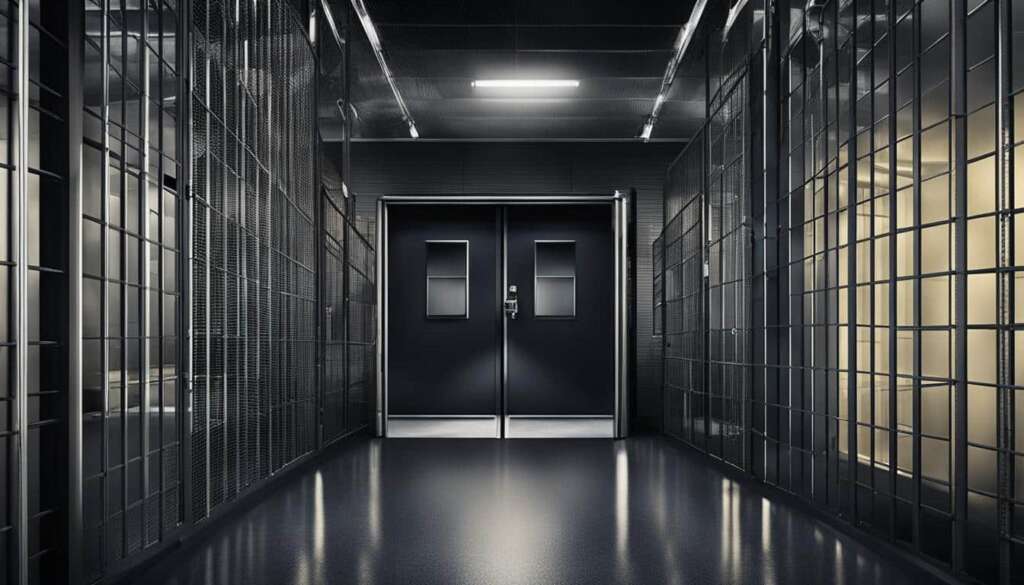Table of Contents
Physical security is an essential aspect of any security plan. It involves the protection of building sites, equipment, and all the information and software contained within them from theft, vandalism, natural disasters, manmade catastrophes, and accidental damage. Physical security measures include solid building construction, emergency preparedness, reliable power supplies, climate control, and protection from intruders. It is fundamental to the overall security of an organisation, as it provides the foundation for information security, software security, user access security, and network security.
Importance of Access Control, Surveillance, and Testing in Physical Security
Access control, surveillance, and testing are vital elements of a comprehensive physical security strategy. These measures play a crucial role in preventing unauthorized access, detecting potential risks, and ensuring an effective incident response. By implementing robust access control, vigilant surveillance, and thorough testing procedures, organizations can enhance their overall physical security measures.
The Significance of Access Control
Access control is a fundamental aspect of physical security, enabling organizations to regulate and manage entry to their premises, facilities, and sensitive areas. By deploying various access control measures such as ID badges, keypads, biometric scanners, and security guards, organizations can restrict access to authorized personnel only.
Effective access control measures not only prevent unauthorized individuals from gaining entry but also allow organizations to maintain a record of who enters and exits their premises. This accountability helps deter potential threats and provides an invaluable resource for incident investigations and post-incident analysis.
The Role of Surveillance in Physical Security
Surveillance is another key element of physical security, providing continuous monitoring of real-world locations and assets. It involves the use of sophisticated technologies such as CCTV cameras, motion sensors, and alarm systems to detect and deter potential threats.
Surveillance systems not only act as a deterrent but also provide invaluable evidence in the event of an incident. Video footage and other surveillance data can aid in identifying perpetrators, analyzing incidents, and improving incident response protocols. In addition, real-time monitoring allows for immediate intervention and response to potential threats, enhancing the overall security of an organization.
The Importance of Testing Physical Security Measures
Testing physical security measures is essential to evaluate their efficacy and identify any vulnerabilities that may exist within the system. Through regular testing and simulation exercises, organizations can assess their ability to prevent, respond to, and mitigate potential threats.
Testing encompasses various scenarios, including simulated break-ins, emergency drills, and system stress tests. It provides organizations with valuable insights into the effectiveness of their access control and surveillance systems, highlighting areas for improvement and enabling proactive adjustments to strengthen physical security measures.
Maximizing Physical Security Through Access Control, Surveillance, and Testing
By integrating access control, surveillance, and testing into a cohesive physical security program, organizations can maximize the protection of their assets, individuals, and sensitive information. These measures work in synergy to deter threats, detect potential risks, and facilitate swift incident responses.
Implementing robust access control measures ensures that physical entry is restricted to authorized personnel only, minimizing the risk of unauthorized access, theft, or damage. Vigilant surveillance systems provide continuous monitoring, helping to identify and address potential threats before they escalate. Regularly testing physical security measures allows organizations to identify vulnerabilities, refine incident response protocols, and enhance the overall effectiveness of their security strategy.
By prioritizing access control, surveillance, and testing, organizations can establish a comprehensive physical security framework that establishes a strong foundation for protecting their facilities, assets, and personnel.
| Benefits of Access Control, Surveillance, and Testing in Physical Security | Access Control | Surveillance | Testing |
|---|---|---|---|
| Prevention of unauthorized access | ✓ | ||
| Continuous monitoring and detection of threats | ✓ | ||
| Rapid incident response | ✓ | ||
| Evidence collection for investigations | ✓ | ||
| Identification of vulnerabilities | ✓ | ||
| Improved incident response protocols | ✓ |
Examples of Physical Security Measures and Techniques
When it comes to access control, organizations have various options to enhance the physical security of their premises. Physical barriers like fences, gates, walls, and doors not only act as deterrents to criminals but also control access to buildings. Implementing technology-based solutions such as ID card scanners and NFC ID cards further strengthens access control measures.
Surveillance plays a crucial role in physical security, aiding in the prevention of criminal activities and providing valuable evidence if incidents occur. CCTV cameras, heat sensors, and notification systems are commonly used to achieve effective surveillance. These systems not only enhance security but also help organizations monitor their premises in real-time.
For a more comprehensive approach, adopting a risk-based approach to physical security enables organizations to prioritize their resources effectively. By assessing and understanding their risk profiles, organizations can invest in physical security measures that align with their specific needs. This optimization of resource allocation ensures that security efforts are focused where they are most needed.
Accountable access control is another vital aspect of physical security. Tying access to specific individuals improves visibility and accountability regarding personnel activity. This approach ensures that only authorized individuals have access to restricted areas and creates a trail of accountability in case of any security breaches or incidents.
These examples showcase various physical security measures and techniques that organizations can implement to safeguard their assets and protect individuals. By combining access control, surveillance, risk-based approaches, and accountable access control, organizations can create a robust physical security framework to mitigate potential threats effectively.
FAQ
What is physical security?
Physical security is the protection of building sites, equipment, information, and software from various threats such as theft, vandalism, natural disasters, and accidental damage.
Why is physical security important?
Physical security is essential for the overall security of an organization as it provides the foundation for information security, software security, user access security, and network security.
What is access control?
Access control is a crucial component of physical security that allows organizations to limit and control who has access to their sites, facilities, and materials.
What measures can be used for access control?
Access control measures include ID badges, keypads, security guards, physical barriers like fences and doors, as well as technology-based solutions such as ID card scanners and NFC ID cards.
What is surveillance?
Surveillance involves monitoring real-world locations and facilities to prevent and respond to incidents. It can be achieved through CCTV cameras, patrols, heat sensors, and notification systems.
Why is testing important in physical security?
Testing helps organizations practice their response to threats and identify vulnerabilities in their physical security systems, ensuring their effectiveness.
How can a risk-based approach optimize physical security?
A risk-based approach allows organizations to invest in physical security measures that align with their risk profiles, optimizing resource allocation.
What is accountable access control?
Accountable access control ties access to individuals, improving visibility and accountability over personnel activity.
Can you provide examples of physical security measures and techniques?
Examples of physical security measures and techniques include solid building construction, emergency preparedness, reliable power supplies, climate control, surveillance cameras, patrols, alarm systems, and more.













